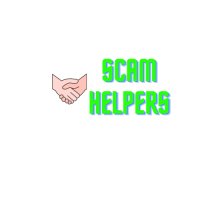A chargeback is the return of credit card money used to make a purchase to the customer. When a customer challenges a credit card purchase, they allege it was fraudulent or was made without their knowledge or permission.
When a customer challenges a transaction, the credit card company reverses the charge, fully reimbursing the consumer and debiting the business account. Chargebacks can lower a company’s income and result in penalties if they happen too frequently.
How do chargebacks work?
- The chargeback procedure varies based on who you employ for payment processing. However, here is what you can normally expect:
- A credit or debit card is used to make a purchase from your company. The transaction is completed, and the monies are deposited into your business account.
- The customer notices the transaction and lodges a dispute with the bank that issued their card, also known as the issuing bank.
- The chargeback process starts when the issuing bank delivers the cardholder with a temporary credit for the transaction and then contacts your payment processor to launch the chargeback process.
- Money taken from the merchant’s account: Your payment processor will notify you of the chargeback, and the disputed funds will normally be withdrawn from your business account until the dispute is resolved.
- Merchant has the option to rebut the chargeback: You have the option to produce documentation to rebut the chargeback. Should you not respond to the chargeback notification, the issuing bank will most likely side with the customer’s dispute.
- If you produce documents to refute the chargeback, the issuing bank will assess the evidence and make a decision. If the bank rules in your favor, the customer is required to pay, and the disputed monies are returned to you.
- Arbitration is an option if you or the customer are dissatisfied with the judgment. In this case, the chargeback issue is taken to the related credit card network (Visa, MasterCard, American Express, and so on) for a final decision.
Credit card chargebacks, MasterCard chargebacks, and Visa chargebacks
- Credit card chargebacks: Despite the fact that credit card chargebacks are a valuable consumer protection tool for disputing a transaction, they pose a significant danger to business owners.
Credit card chargebacks happen for a variety of reasons:
- The charge was neither recognized nor authorized by the cardholder.
- The shopkeeper charged the consumer twice by mistake.
- The consumer did not receive the product or service, or the quality was inadequate.
- Mastercard chargebacks: Mastercard is the second largest card network in the United States, trailing only Visa, which means that many retailers will be dealing with Mastercard chargebacks on a frequent basis. Mastercard gives cardholders a rather long period of time to file a chargeback. The majority of chargebacks can be submitted up to 120 days after the transaction, although certain recurring billings can be challenged 540 days later.
- Visa chargebacks: When a cardholder files a complaint with the bank that issued their Visa-branded credit card, the transaction is classified as a Visa chargeback, also known as a Visa dispute. The bank debits the merchant for the transaction amount and provides the cardholder with a temporary credit.
Reason for the chargeback
The majority of chargebacks are initiated due to fraud, but the consumer may initiate a claim after receiving an item. Because it is not a truly fraudulent transaction in this scenario, businesses refer to it as “friendly fraud.” Companies lose money in either case.
When a credit card company initiates a chargeback, they specify the reason for the cancellation, which can fall into one of four broad categories:
- Fraud occurs when a purchase is done without the buyer’s knowledge or consent. The most prevalent reason for a chargeback is this.
- The consumer never received the goods for which they paid.
- The buyer was invoiced twice for the same item, or a return was made, and a refund was needed.
- Technically, the buyer does not have enough funds in their account to cover the amount, or there was a bank error.
How to avoid chargebacks?
- Establish a clear return policy.
- Along with your contact information, including an email address and phone number.
- For card-present transactions, always obtain a customer signature.
- For card-not-present transactions, use address verification services (AVS) such as zip codes and CVV codes.
Fill out a complaint form on the Scam Helpers website and our experts will help you regarding the chargeback by providing a free consultation.
More about Scams
Visit our Facebook Page
Visit our Twitter account
Read the comprehensive list of Scam brokers here
Read GetzCapital Review
